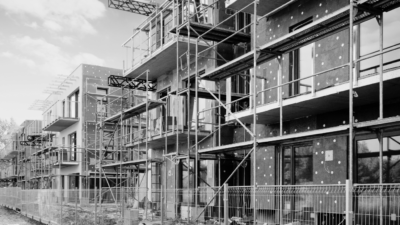Covid-19 saw a disunited kingdom respond to a global pandemic, with devolved administrations in Wales and Scotland often taking a more hawkish approach to lockdowns than the central government in Westminster.
A successful vaccine roll out means attention is now returning to other issues, such as the shameful ongoing scandals around building fire safety. Yet just as with Covid-19, we are starting to see the lack of a one-nation approach.
In June, the Welsh government announced its commitment to fund fire safety surveys for multi-occupancy buildings over 11 meters.
Minister for climate change Julie James confirmed the surveys will be funded by the Welsh Building Safety Fund.
This additional layer of support arrives after the Welsh government committed to absorbing the costs associated with EWS1 certification at the end of last year, further differentiating itself from the hands-off approach taken by Westminster.
Neither the Fire Safety Act 2021 nor the proposed Building Safety Bill will resolve the issues around liability for outstanding remediation costs.
The surveys will go beyond cladding issues including assessing internal issues such as ineffective compartmentation.
As well as providing monetary support to finance fire safety surveys and the EWS1 process, the eligibility criteria to access Welsh government’s Building Safety Fund includes a wider catchment of multi-occupancy buildings than the English variant which prioritises ‘higher-risk’ buildings over 18 meters.
This is probably because the Welsh government’s Building Safety Position Statement identifies as few as 147 ‘high rise’ (i.e. 18 meters, or more than six storeys in height) residential buildings in Wales compared to an estimated 11,000 in England.
The Position Statement itself states that ‘the solutions will be different’ because ‘the scale of the high rise landscape in Wales is not comparable to England’.
That concession aside, it is clear that the gap between financial assistance available in England and Wales is widening. Fresh funding for surveys go beyond cladding issues to include things like ineffective compartmentation and FD30-120 fire door resistance appraisals, but will not cover the cost of the actual EWS1 form.
Julia James, the minister responsible for housing in Wales, has also suggested that this package is part of a phased response to fire safety concerns which will include a secondary remediation fund.
While MHCLG has decided in the last few days to scrap EWS1 forms as a requirement for buildings below 18 metres in height, it’s clear that the Welsh assembly is intent on removing financial hurdles faced by so-called mortgage prisoners, leaving English leaseholders to run the building safety marathon with all the obstacles of uncertainty still in play.
The issue of remediation continues to undermine any meaningful buy-in to reform, like the proposed Building Infrastructure Levy and the Building Safety Regulator.
There is a lot to learn from the Welsh approach of unshackling leaseholders weighed down by the costs of putting things right, rather than the English idea of loosening the chains.
That said, the fund is not yet open for applications, it will open in the Autumn and perhaps due diligence surveys will be approved for funding by early 2022 – which again leaves leaseholders trapped unable to sell or remortgage, and with no confirmation as to what funding the Welsh government is to set aside for remedial works.
Just as the Welsh government often pushed ahead of Westminster when it came to fighting Covid, so is Cardiff in terms of building safety, and this could be the beginning of a huge divide between the two countries.






















Mass bankruptcies and a run on the banks will occur if Govt doesn’t pay for ALL remediation costs.
No way will leaseholders pay for remediation costs.
It will be cheaper going bankrupt.
That will leave the lender with a delinquent mortgage and worthless property.
Govt to then recover from those responsible who AREN’T the leaseholders.